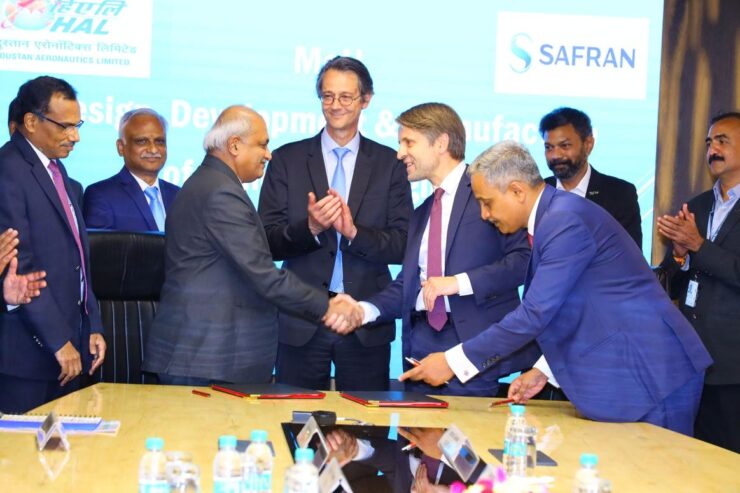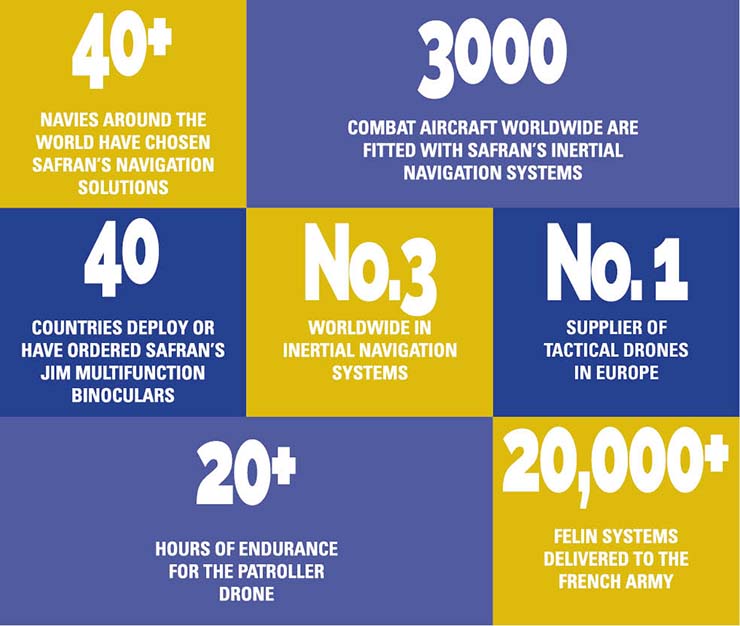In a major development that’s going to further boost Indian Defence capability, the French Defence major Safran Group is all set to commence work on engines to power the Indian Multi-Role Helicopter (IMRH) and its naval variant the Deck Based Multi-Role Helicopter (DBMRH), it was announced recently, media reports have said.
The media reports noted that under this partnership, the local defence manufacturing ecosystem in India will play a pivotal role, which will give a further fillip to the “Aatmanirbharta” agenda of the Government of India.
Safran Group provides services in the fields of satellite communication and satellite tracking, as well as manufacturing critical machinery for fighter aircraft, rockets and missiles.
Prime Minister Narendra Modi is slated to visit Paris in July this year.
The news that the design and development work on the helicopter engines under the joint venture between French company Safran Helicopter Engines and Hindustan Aeronautics (HAL) is set to commence soon, comes close to PM Modi’s scheduled visit to France.
It may be noted that the two sides had signed a Memorandum of Understanding (MoU) to this effect in 2022. As per this MoU, the joint venture seeks to meet the requirements of the Indian armed forces as well as the future 13-ton IMRH and DBMRH.
The MoU, it may be noted, was signed in the presence of Safran Global CEO Olivier Andriès and the top official of the state-owned HAL.
The IMRH is expected to be launched four years from now.
Earlier, media reports had noted that both Safran Helicopter Engines and HAL had signed a workshare deal to develop the engine for IMRH and DBMRH. The two sides had discussed and agreed on an equivalent repartition where HAL will participate in the design, development and production of the core engine components.
These helicopters, as reported by the media, are for the Indian Army and the Air Force and will have the capability to take off and land at 5 km altitude. They will replace the ageing Mi series Russian-made military helicopters that the Indian Air Force (IAF) will start phasing out by 2028-29.
It must be mentioned here that the Helicopter Engines MRO Pvt Limited (HE-MRO) facility has already been inaugurated in Goa to help provide maintenance services for more than 1000 Safran-designed helicopter engines.
Multiple partnerships between HAL and Safran Helicopter Engines are already in existence, including the Shakti engine. This engine powers HAL-built helicopters like the Rudra, Light Combat Helicopter and Dhruv.
Meanwhile, the Indian news agency PTI reported from Thiruvananthapuram that the Safran Group has opened a unit and begun operations in Kerala.
This is expected to invigorate Kerala’s aspiration and efforts to graduate into the country’s hub in the aerospace sector. Kerala Industries Minister P Rajeev inaugurated the test centre for aerospace and defence products set up near Technopark.

Innovation
The Safran Group, it may be noted, highlighted expanded defence capabilities during the 2023 Quad-A Mission Solutions Summit. It was among the exhibitors at the annual Mission Solutions Summit, organised by the Army Aviation Association of America (commonly known as “Quad-A”) in Nashville, Tennessee.
Safran Helicopter Engines USA; Safran Data Systems; Safran Electronics & Defense, Avionics USA; and Optics 1 were the companies representing the Group at this important gathering.
As the world’s leading manufacturer of rotorcraft turbines, Safran Helicopter Engines showcased its Arriel helicopter engine. Assembled in Grand Prairie, Texas, the Arriel powers the U.S. Army’s twin-engine UH-72A and UH-72B Lakota helicopters, with over 900 of these power plants delivered to date.
Also featured at the Safran booth was the ARTIS 410 multispectral stabilized sight system by Optics 1. ARTIS 410 provides ultra-long-range observation and precision targeting capabilities with high-definition sensors and advanced functions in a single LRU (line-replaceable unit).
Additionally, visitors to the Safran booth were able to learn about Aircraft Information Systems solutions and Flight Test Instrumentation solutions from Safran Data Systems. Products exhibited included Mission Data and Video Recorders (ENERTEC VS1410/1510) and a Data Acquisition Unit (XMA) and a Recorder (MDR).
Safran Defence Unit
The Safran Defence Unit has been protecting citizens by offering armed forces defence solutions that prevent dangers and ensure geopolitical stability is essential in preparing for the future and shielding people from risks.
Safran offers a wide range of defence systems and equipment, deployed by armies, navies and air forces from around the world.
Navigation and guidance
Safran has developed world-class expertise in enabling technologies for inertial navigation (mechanical, thermal, laser, fibre-optic, resonant), which means it offers systems adapted to all operating environments.
Safran’s aim is protecting nations, populations and high-value sites as an ongoing challenge. The defence systems used have to offer ever-greater precision, especially to prevent collateral damage. That’s why Safran is developing new sights and fire control systems. Incorporating the latest technologies, these systems ensure high-precision target tracking and engagement for artillery, armoured vehicles and aircraft.

Missile propulsion
Missile propulsion has been a centre of excellence at Safran for more than half a century. Part of a ballistic missile’s course is determined solely by gravity and drag. But prior to ballistic flight, there’s a boost phase, using a propulsion system that sends it on its way towards the target.
Safran provides propulsion systems for the European leader in tactical missiles, MBDA Missiles Systems, including the Mistral very short-range air-to-air missile, the long-range Scalp air-to-ground missile, and its derivative, Storm Shadow.
Safran also teams up with Roxel, a 50/50 joint company with MBDA. Through this partnership, Safran designs, develops and builds solid propulsion systems for a wide range of tactical missiles deployed by air forces, navies and armies: Milan (light antitank missile), MICA (air defence missile), AASM (guided air-to-ground missile), MdCN (naval cruise missile).
Dismounted warfighters
Safran has built up wide-ranging expertise in integrating warfighters in the modern battlespace. Portable optronics, target acquisition systems for infantry and artillery observers, radio modules, secure tactical terminals, and parachutes. Through these advanced solutions, Safran helps maintain infantry soldiers’ integrity and tactical superiority in all theatres of operation.
It is also actively involved in a number of research programs, with both governments and industry partners, to develop innovative new technologies. These advances will underpin the warfighter’s individual and collective capabilities, including positioning and navigation, observation and identification, mobility aid, energy sources and connectivity.
Drones and robotics
Safran understands and applies all enabling technologies for drone systems, allowing these systems to handle a wide range of missions: surveillance, intelligence, protection, threat detection, collaborative combat and much more.
Drawing on more than 25 years of experience in tactical drone systems, Safran is now developing the Patroller™, a tactical, multisensor, long-endurance drone that has already been chosen by the French army. In addition, it is developing the eRider, an autonomous all-wheel-drive hybrid vehicle, configurable for a wide range of missions.
The integration of these autonomous vehicles in both military and civil environments, including tight urban spaces, is one of Safran’s top research objectives.













